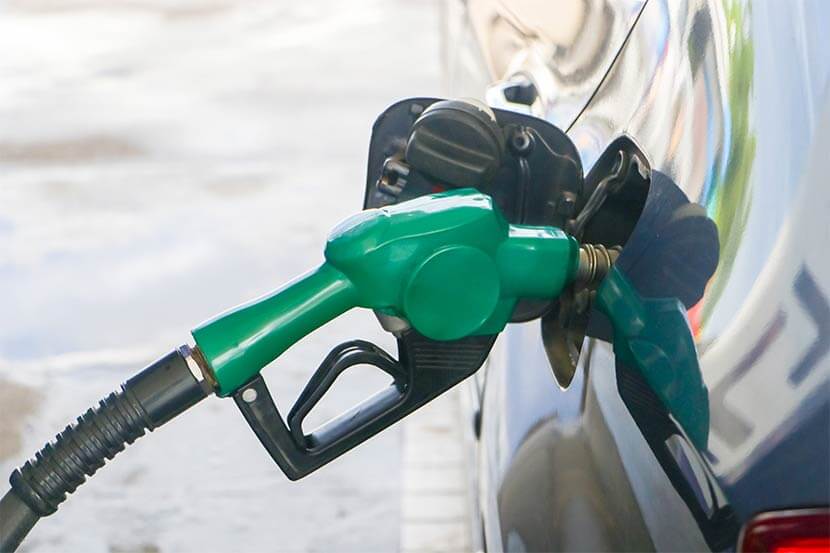To cut your motoring costs it’s worth knowing what you could do to reduce fuel consumption. We look at different driving techniques that could help you avoid wasting fuel.

Before we look at how to save on costs and tips for fuel efficiency, let’s look at why the price of fuel is so high in the first place.
Why is fuel so expensive?
The price of petrol in the UK is among the most expensive in the world.
Crude oil is bought by retailers on the global market, where prices might fluctuate with supply and demand. Exchange rates are likely to have an effect on prices too.
So what makes up the rest? The answer (mostly) is tax. UK fuel duty, at 53p per litre, is one of the highest in the world. According to the BBC, this accounts for 35% of the total cost of fuel. On top of this is VAT, which currently sits at 17% - but it’s charged at 20%.
| What makes up the cost of fuel? | Percentage |
|---|---|
|
Fuel duty
|
35%
|
|
Cost of petrol to the supplier
|
33%
|
|
VAT
|
17% (VAT is charged at 20% but makes up 17% of the cost of fuel)
|
|
Retailer’s profit
|
8%
|
|
Cost of biofuel content (for example E10)
|
7%
|
|
Supply and delivery
|
1%
|
Source: BBC
When is fuel consumption at its highest?
When you’re accelerating your fuel consumption is at its highest. It’s likely you’ll have to accelerate on multiple parts of your journey, but opting for gentle acceleration is usually the best option.
When you’re travelling faster your vehicle uses more fuel. This is because your engine is working harder and needs more fuel to do this.
On some motorways in England and Wales, the Government cut the speed limit to reduce emissions. Usually, the less emissions you’re creating the less fuel you’re using. So travelling at 50 mph instead of 70 mph could improve your fuel consumption.
Also if you’re travelling at 80 mph you’re breaking the law and could end up with a speeding fine. You’re also using 25% more fuel than you would by staying within the speed limit.
What will reduce my fuel consumption?
With the government unlikely to reduce fuel duty any time soon, it's worth thinking about how you can use less fuel.
One thing to do is look into fuel efficient cars, as those with the highest MPG rating should be the most fuel efficient.
Or you might think about switching to an electric car.
In the meantime, there are lots of other easier ways to reduce your fuel costs.
Not only could these tips save you money, but making the most of your fuel reduces your car’s carbon emissions.
How can you avoid wasting fuel?
Here we look at some of the best ways to increase your fuel efficiency and to save on petrol.
1. Maintain your vehicle
Well-maintained vehicles generally use fuel more efficiently, so it’s worth keeping your vehicle in good condition.
Maintenance includes booking it for regular services and getting issues fixed quickly.
2. Remove excess weight
Your car uses more fuel if it’s heavy. One way to reduce its weight is to take anything out of the car that you’re not using.
Removing your roof rack when you're not using it and getting rid of any rubbish in the car could reduce some weight.
Footballs, deckchairs, toys and so on might be handy from time to time, but the weight could increase your fuel consumption.
Give your car boot a clear out and try not to travel with items in the car you don’t need.
3. Inflate tyres to the correct pressure
If you don’t know whether you have the correct tyre pressure your fuel consumption should tip you off.
The surface area that’s in contact with the road increases when a tyre is under-inflated. The more surface area in contact with the road, the more drag on the wheel.
4. Only top up your tank with as much fuel as you need
Only topping up with what you need and avoiding having a full tank means the fuel you do have goes slightly further.
To make it easier to judge the correct amount of fuel, keep a notebook in the glove box, or keep a record on your phone.
When you fill up, write down how much fuel you put in to get from A to B. Note this in litres, not in pounds, as fuel prices are always changing.
Some fuel tanks can take up to 109 litres, so that’s a significant amount of extra weight to carry around. You wouldn’t leave 109 litres worth of bottled water in your boot, would you?
5. Drive smoothly
Your driving style might have a big impact on how much petrol or diesel you use.
Try to keep your driving smooth. Gentle acceleration and using the highest safe gear should use less fuel.
What’s more, when you approach traffic lights, ease off the accelerator early if the lights are red. Why hurry just to wait?
This is sometimes called 'defensive driving'. Not only should it help you use less fuel, but it tends to be safer too. And, if you’re driving with a black box device in the car, defensive driving could also help your car insurance costs.
6. Avoid idling
Keeping the engine running while you’re stopped - otherwise known as idling - consumes roughly half a gallon to about a gallon of fuel every hour. You’ll also be pumping carbon dioxide into the atmosphere.
This means you're burning about 1.067 to 2.13 ounces of fuel every minute you're idle.
Modern cars should be more fuel efficient. It’s likely you're burning less fuel by turning off your engine, then restarting it when you have to move again. Plus, leaving your engine idle for too long is illegal.
7. If you have it, use the engine stop-start
If your car has a stop-start engine, use it. Keeping your foot on the clutch when you stop at traffic lights could waste fuel.
But if you take your foot off while the car is in neutral, the car's stop-start system should kick in, saving you fuel and money.
8. Don’t coast - it’s a bad driving technique
Coasting - which is driving out of gear - isn't a safe driving technique. You have less control of your car and you're likely to travel faster as you go downhill. Some people coast to try to reduce their fuel consumption.
But coasting doesn't save fuel. While it probably won’t cost you extra in fuel, nowadays it won’t save you fuel either.
Modern cars have electronic control units (ECUs) so your car uses less fuel when going downhill.
9. Reduce your air con use
Every time you go to cool down your car with the air conditioning, you’re reducing your fuel. It’s the same for your heating.
So, only use both of these if you really need to. Both use engine power to work properly and therefore increase your fuel consumption.
10. Use cruise control
One way to save fuel is to drive at a constant speed. Cruise control can help with this.
If you’re on the motorway or on a long constant flat surface, try activating cruise control. You might find that using it reduces your fuel consumption
Don’t use cruise control on roads with a gradient though. As the system is designed to be used on flat roads at a constant speed, it requires more power to get up a hill.
This could increase your fuel consumption, rather than save it.11. Combine journeys into one round trip
Instead of making several one-off trips, try to combine them into a single round trip for better fuel efficiency.
When your engine has been on and is warmed up, it should be most fuel efficient. But starting when it’s been off for a while might use up more energy and fuel.
12. Keep your windows closed
When it's warm in the car, do you roll the windows down or switch the air conditioning on?
Either way could cost you, depending on your speed.
Air conditioning uses fuel. But having the windows down causes drag, which uses up fuel too.
At low speeds, open the window - the fuel used to compensate for drag is less than the fuel used to power your air con.
But when driving on the motorway, it’s the other way around. So, turn on the climate control and roll the windows up. The tipping point for this is around 30 mph.
13. Know how much you really spend on fuel
Knowing how much your car is costing you to run is the first step to shaving a few pounds off your bill.
Check out our fuel cost calculator to see just how much you're spending on petrol or diesel each week, month and year.
14. Find a cheaper place to get petrol
If you find your local petrol station is costing the earth, you might find that there’s one a few miles down the road that's a little cheaper.
Use our petrol prices tool to get up-to-date petrol prices within five, 10 or 20 miles from your location.

